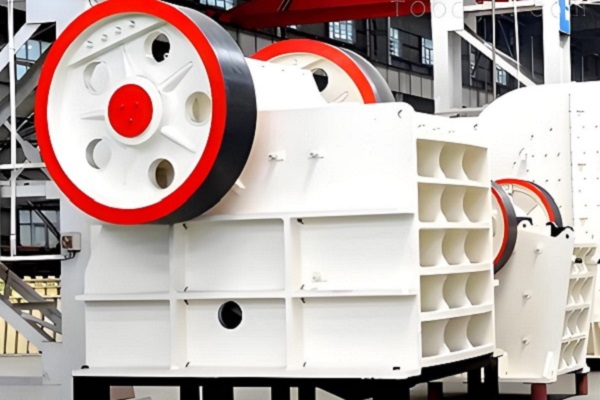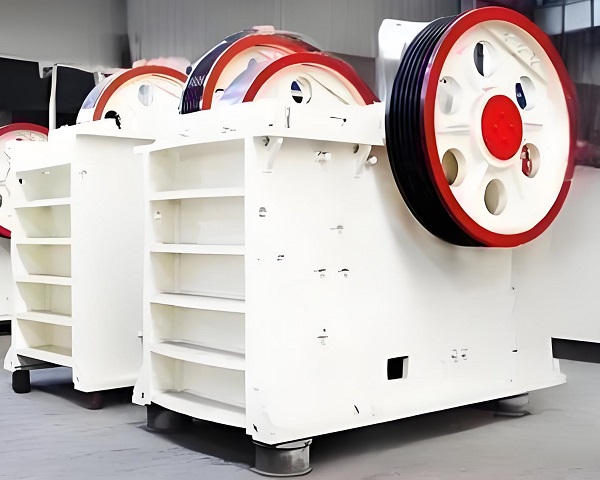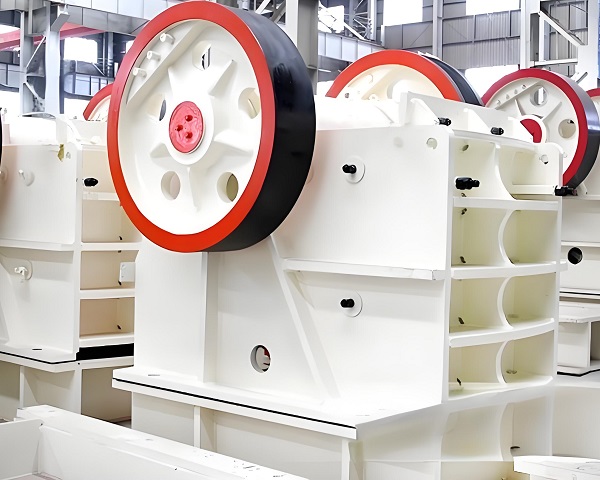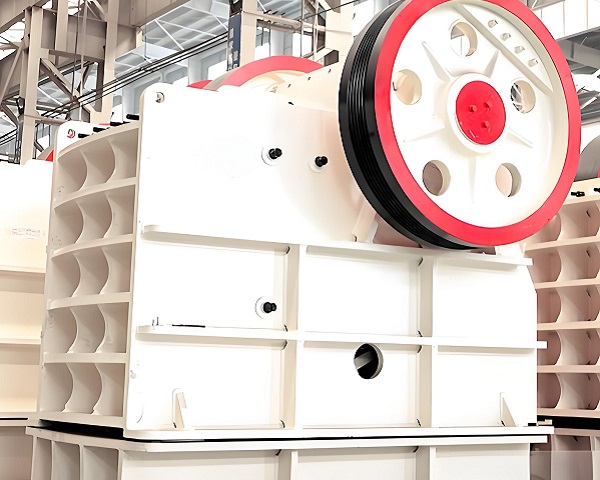Jaw crushers, the core equipment for primary crushing in industries like mining and building materials, directly influence production line capacity, finished product quality, and operating costs. The market offers a wide variety of jaw crusher models, ranging from small PE150×250 models to large PE1200×1500 models. Ignoring key factors like material properties and production capacity requirements can lead to wasted energy or frequent failures caused by a small machine carrying a heavy load. This article focuses on key selection criteria and explains the scientific selection process to help companies accurately match equipment with production needs.
Anchoring Core Basis: Clarifying the Three Prerequisites for Model Selection

1. Accurately Analyzing Material Characteristics
Material is the fundamental prerequisite for model selection, and three key indicators must be carefully considered:
Hardness and Wear Resistance: Materials are graded using the Mohs hardness scale. Medium-soft materials such as limestone (grades 3-4) and gypsum (grade 2) can be handled with standard manganese steel jaws. Hard materials such as granite (grades 6-7) and basalt (grades 7-8) require high-chromium alloy or bimetallic composite jaws, and the machine frame must be reinforced. A granite mine previously misused standard jaws, resulting in weekly jaw plate replacements. Replacing them with high-chromium alloy jaws extended their lifespan to three months.
Moisture and Viscosity: Materials with a moisture content exceeding 15% are prone to sticking to the crushing chamber and clogging it. Therefore, a deep-cavity, large-discharge model with an optimized tooth plate inclination angle (recommended 20°-22°) is recommended. Materials with a mud content exceeding 20% should be equipped with a pre-screening device to prevent mud from encapsulating the material and impacting crushing efficiency. Particle size and composition: The maximum feed particle size must be less than 85% of the jaw crusher's feed opening width. For example, the PE600×900 model has a feed opening width of 600mm and is suitable for materials with a maximum particle size of up to 510mm. Materials containing metallic impurities require an overload protection device to prevent the jaw plate from jamming and damage.
2. Quantify production capacity and finished product requirements
Capacity matching: Select a machine model based on the production line's designed capacity. Small production lines (10-50 tons per hour) can use the PE250×400 (10-30 tons per hour) or PE400×600 (20-60 tons per hour); medium-sized production lines (50-200 tons per hour) are suitable for the PE600×900 (50-160 tons per hour) or PE750×1060 (80-230 tons per hour); large production lines (over 200 tons per hour) require the PE900×1200 (120-380 tons per hour) or higher. Note that actual production capacity is affected by material hardness and moisture content. When selecting a machine model, allow 10%-15% capacity redundancy. Finished Product Particle Size Control: The jaw crusher's discharge opening adjustment range determines the finished product particle size. For example, the PE500×750 jaw crusher's discharge opening can be adjusted between 50-100mm, making it suitable for coarse crushing. If a finer finished product (20-50mm) is required, it can be combined with an impact crusher or cone crusher to form a secondary crushing system. The jaw crusher, acting as the coarse crusher, requires a smaller discharge opening (30-50mm).
3. Site Compatibility and Supporting Conditions
Site Constraints: For narrow sites, compact models are preferred. For example, the PEX series tertiary jaw crusher (e.g., the PEX250×1000) has a low height and small footprint, requiring only 4-6 square meters of installation space. For open-air sites, a tire-mounted jaw crusher with a mobile chassis can be used, offering enhanced mobility and eliminating the need for a fixed foundation. Power Supply and Drive: Confirm the on-site power supply voltage (380V/660V) and power capacity. The PE600×900 requires a 75kW motor, and the PE900×1200 requires a 110kW motor to prevent the equipment from operating at full capacity due to insufficient power.
Environmental Requirements: For residential areas or areas with strict environmental control, select a model with a sealed cover and a pulse dust collector to achieve dust emissions ≤10mg/m³. Rubber vibration damping pads should be used to control noise levels to below 85dB.
Focus on Key Parameters: Achieving Precise Matching of Equipment Performance

1. Core Structural Parameter Selection
Feed Inlet Size: Follow the principle of "maximum feed particle size = feed inlet width × 0.85." For example, if processing ore with a maximum particle size of 600mm, select a model with a feed inlet width ≥ 706mm (recommended PE750×1060, feed inlet width 750mm). A feed opening that is too narrow can easily cause material blockage, while one that is too wide can reduce crushing efficiency.
Discharge opening adjustment methods: Manual wedge adjustment is suitable for small equipment (PE ≤ 400×600), offering lower precision but lower cost. Hydraulic adjustment is suitable for medium-to-large equipment, enabling remote and precise adjustment with an adjustment range of 50-150mm and overload protection, making it the preferred choice for medium-sized and larger production lines.
Jaw material and structure: For medium-soft materials, choose Mn13 high-manganese steel jaws with a hardness of HRC20-25 and excellent toughness. For hard materials, choose Mn18Cr2 or high-chromium alloy jaws with a hardness of HRC45-50 and 2-3 times greater wear resistance. Regarding tooth configuration, choose deep-tooth jaws (tooth height 15-20mm) for coarse crushing and shallow-tooth jaws (tooth height 5-10mm) for fine crushing.
2. Performance Parameter Matching Logic
Eccentricity and Speed: Coarse crushing requires a large eccentricity (15-25mm) and a low speed (200-300 rpm) to ensure thorough material crushing. Fine crushing requires a small eccentricity (8-15mm) and a high speed (300-400 rpm) to increase crushing frequency. The PE900×1200 uses a 22mm eccentricity and a speed of 250 rpm, suitable for coarse granite crushing. The PEX300×1300 uses a 12mm eccentricity and a speed of 350 rpm, suitable for fine limestone crushing.
Motor Power and Crushing Force: The power must match the machine model. Too high a power will waste energy, while too low a power will result in insufficient production capacity. The PE500×750 is equipped with a 55kW motor and has a crushing force of 1200 kN; the PE1200×1500 is equipped with a 160kW motor and has a crushing force of 3000 kN. For extremely hard materials, the motor power needs to be increased by 10%-15%.
Strengthening throughput stability: Deep-chamber jaw crushers are preferred. These crushing chambers are 20%-30% deeper than traditional models, resulting in a higher material fill rate and more stable throughput. For example, the Nankuang Group PE750×1060 deep-chamber crusher boasts a 15% increase in throughput compared to standard models of the same specification.
Application Requirements: Industry-Specific Model Selection and Case Studies

1. Mining Industry
Coarse Crushing in Metal Mines: For handling extremely hard materials such as iron ore and copper ore, a model with a high-strength frame and high-chromium alloy jaw plates, such as the PE900×1200, is required, along with a hydraulic adjustment system and overload protection device. One iron mine, using this model, has achieved a monthly throughput of 150,000 tons, with a jaw plate life of two months. Non-metallic Mineral Crushing: For medium-soft materials like limestone and dolomite, economical models such as the PE600×900, paired with an Mn13 jaw plate, offer a balanced approach to cost and efficiency. A limestone mine using this model boasts an hourly capacity of 120 tons at a crushing cost of only 1.2 yuan per ton.
2. Construction and Building Materials Industry
Sand and Gravel Aggregate Production: For primary crushing, choose a model with a large feed opening and high processing capacity (such as the PE750×1060), with a discharge opening adjusted to 50-80mm. Combined with an impact crusher, this crusher produces high-quality aggregate. One aggregate plant uses a combination of a PE750×1060 and a PF1315 impact crusher, achieving an hourly capacity of 200 tons and a flake content of ≤10% in the finished product.
Construction Waste Recycling: A mobile jaw crusher (such as the tire-mounted PE600×900) offers flexible relocation capabilities, allowing it to operate directly at demolition sites. This machine model is used in a construction waste treatment project, with a daily processing capacity of 800 tons and a recycled aggregate recovery rate of 90%.
3. Other Sub-Sectors
Chemical Industry: For processing low-hardness, corrosive materials such as gypsum and salt ore, choose stainless steel jaw plates or models with anti-corrosion coatings to prevent material corrosion.
Metallurgical Industry: For processing wear-resistant materials such as steel slag and slag, choose heavy-duty models with bimetallic composite jaw plates and reinforced spindles, such as the PE1000×1200, to extend equipment life.
Avoiding Selection Mistakes: Avoiding Four Common Traps

1. Reject "Price-Sole" Approach
Low-priced models often use ordinary carbon steel frames and inferior jaw plates. While the initial investment is low, they are prone to frame cracking and rapid jaw wear. One company, driven by cost-consciousness, selected a low-priced PE600×900 model. Within three months, the frame cracked, and repair costs exceeded 50% of the new machine price. The company ultimately replaced the machine with a reputable manufacturer's model.
2. Avoid misleading "inflated production capacity" claims.
Some manufacturers overstate their production capacity, with actual capacity only being 60%-70% of the stated value. When selecting a model, request a third-party test report from the manufacturer or refer to actual usage data from users in the same industry. For example, a user might mistakenly believe a manufacturer's claim of "80 tons per hour for a PE400×600 model," only to realize only 40 tons, resulting in insufficient production capacity.
3. Don't neglect after-sales service.
Prefer brands with nationwide service locations and a warranty period of 12 months or longer to ensure prompt response to repair requests.
4. Don't skip the machine test.
Before selecting a critical model, bring your material to the manufacturer for a test run to observe crushing efficiency, product quality, and equipment stability. A granite mine purchased a model without a test run. Due to a mismatch in jaw plate material, the equipment had to be shut down for a jaw plate replacement after only one week of operation.
Jaw crusher selection requires a logical framework based on "materials as the foundation, parameters as the core, application scenarios as the priority, and service as the guarantee." First, clarify material characteristics, production capacity, and site conditions. Then, precisely match key parameters such as feed port size and discharge adjustment method. Finally, select the appropriate model based on the industry scenario, while avoiding price traps and the risk of false pricing. Scientific selection can increase equipment capacity utilization by over 20% and reduce per-ton crushing costs by 15%-25%, laying a solid foundation for efficient production line operation. It is recommended to consult with professional engineers before selecting a model to develop a customized plan based on specific needs.
Jaw crusher selection is more than a simple model match; it involves a systematic matching process encompassing "materials - parameters - application scenarios - service." Following this logical framework of "materials as the foundation, parameters as the core, application scenarios as the priority, and service as the guarantee" can avoid pitfalls such as false pricing and mismatched matching, while also achieving an optimal balance between capacity utilization and cost control. Scientific selection can significantly reduce operational risks and provide core support for efficient production line operation. It is recommended to combine actual materials and production needs, and work with a professional technical team to develop a customized plan to maximize the value of the equipment.
Save Time! Get A Detailed Quotation Quickly.
